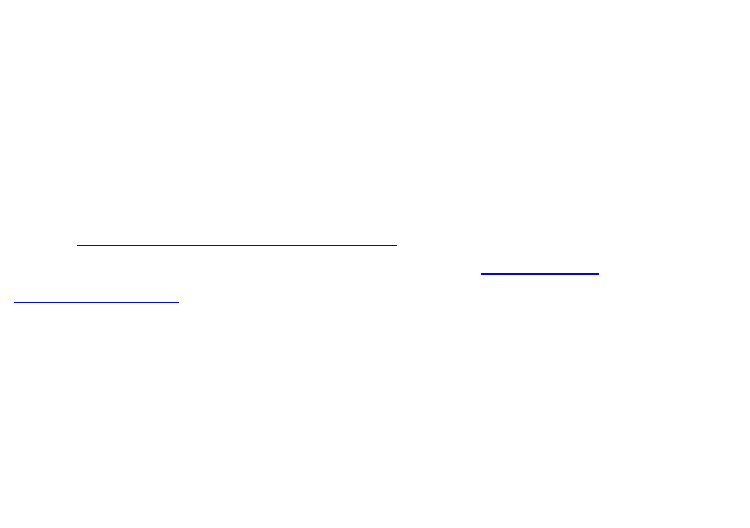Mona Baker & Gabriela Saldanha. Routledge Encyclopedia of Translation Studies (2nd edition)
Подождите немного. Документ загружается.


Page296
(Gile2005:131).Occasionally,aspectssuchasdocumentation,conference
preparation,terminologyandprofessionalETHICSarecovered,butrarelyas
separateunits:theyareclearlyintendedtocomplementinterpretingtechniques.
Theintroductionofconsecutivebeforesimultaneousinterpretingisinformedby
themodelpioneeredbySeleskovitchandLederer(1989/2002)atESIT,Paris,
andhasbeenlargelyacceptedbythevastmajorityofinterpretertraining
institutions.Itisbasedonthepremisethatconsecutiveobligestraineesto
analysecontentanddissociatewordsfrommeaning,ratherthanlapsinginto
wordforwordtranscoding,andthusconstitutesanappropriategroundingfor
themorecognitivelyexactingtechniqueofsimultaneous(Gile2005).
Formanyyearstheterm‘interpreting’wasunderstoodbymanytomean
CONFERENCEINTERPRETING.However,theendofthetwentiethcentury
sawtheriseofCOMMUNITYINTERPRETING(alsoknownas‘public
serviceinterpreting’,andunderstoodheretoincludeCOURT
INTERPRETINGforthesakeofbrevity)asaseparatedisciplineforresearch
andtraining(seealsoDIALOGUEINTERPRETING).Althoughthebasicskills
involvedarethesame,thewayinwhichtheprofessionhasdevelopedandisstill
developing,thecontextsinwhichcommunityinterpreterswork,thedifferent
situationalandcommunicativefactorswhichcomeintoplay,thelanguage
combinationsandmanyotheraspectscombinetomakespecifictraining
desirable(Adamsetal.1995).Inmanycountriesthistypeofinterpretingis
donebyfamilymembersandvolunteers,andprofessionalizationisurgently
requiredforanumberofreasons,includingtheneedtoguaranteetherightsof
migrantsinthehostsocieties(seeASYLUM;MINORITY).Fewcountriesin
theworldhavedevelopedcomprehensivetrainingsystemsfortheircommunity
interpreters,AustraliaandSwedenbeingthemostnotablecases,followedby
Canada,theUKandtheUSAinthecaseofcourtand,morerecently,medical
interpreters.Buteveninthesecountries,trainingapproachesarequitediverse
andareconditionedbyhistoricalandculturalfactors,suchasimmigrationand
languagepolicy,amongstothers.Arecentsurveyofcommunityinterpreter
trainingaroundtheworld(AbrilMarti2006)indicatesthattraininginitiatives
comefromawidevarietyofsources,includinguniversities,publicservices,local
authoritiesandNGOs.Onlyincountrieswithhighlydevelopedstructuresforthe
provisionandaccreditationofcommunityinterpretersistrainingprimarily,
althoughnotexclusively,providedatuniversitylevel(Australia)orunderthe
auspicesofauniversitylevelinstitution(Sweden).Giventheurgencywithwhich
coursesaresetuptorespondtopressingneeds,traditionaltrendsin
translator/interpretereducationarenowchallengedandnovelformulasadopted:
coursesgiveninonecommonlanguage,distancelearning,adulteducation,part
timecourses,itinerantcoursesofferedoncontract,creationofnetworksthat
shareresourcesandprogrammes.Unlikeconferenceinterpretingprogrammes,
coursesoncommunityinterpretingdonotgenerallyfocusoninterpreting
techniquesbutratheronfactualinformationaboutthefunctioningofthepublic
serviceconcernedand/orinterculturalmediationtechniques.
Noninstitutionaltraining
Noninstitutionaltrainingisofferedbytwomajorstakeholdersintranslation:
professionalbodiesandmajoremployers.Mostcountrieshaveatleastone
associationwhichbringstogetherprofessionaltranslatorsand/orinterpreters
withtheaimofjointlydefendingtheirinterests,promotingtheprofessionand
protectingstandards.Thevastmajorityoftheseorganizeprofessional
developmentprogrammesformembers,normallyintheformofshortcourses
designedtodealwithveryspecificaspectsoftranslators’and/orinterpreters’
work:newtechnologies,marketing,tax,copyright,terminologymanagement,
revision,andsoon.Someorganizelongertermprogrammes,suchasthe
AmericanTranslators’Association(ATA)mentoringscheme,wherebysenior
experiencedprofessionalsofferguidancetonovicesoveraperiodoftime,thus
facilitatingtheirentryintotheprofession.ATAalsohasaContinuingEducation
programmethatrequiresmemberstoearnaminimumof20pointseverythree
yearsinordertomaintaintheiraccreditation.
AcademicassociationsandsocietiesinthefieldofTranslationandInterpreting
Studies,suchasEST(EuropeanSocietyofTranslationStudies)andIATIS
(InternationalAssociationforTranslationandInterculturalStudies),tend

Page297
tohavetrainingcommitteeswhichorganizeseminars,compilebibliographical
data(seeforexampletheuniqueBibliographyofPublicationsonTranslator
andInterpreterTrainingcompiledbyKearns(2006a)fortheIATIStraining
committee)andpromoteresearchintothetrainingoftranslatorsingeneral.
ConferenceinterpretertrainingintheWesternworldisstronglyinfluencedby
AIICtrainingrecommendations,whichweredevelopedatsuccessive
conferencesheldundertheauspicesofAIICfrom1969onwards(AIIC1979).
ThishasgivenconferenceinterpretinginEuropemuchcohesionwithregardto
trainingmethods.TheworkoftheAssociation’sTrainingCommitteeincludes
organizingtrainingworkshops(forinterpretersandinterpretertrainers)aswell
aspublishingguidelinesforbestpracticeforinterpretertrainingandaguideto
interpretertraininginstitutionsgradedaccordingtocompliancewiththe
association’scriteria.AlthoughAIICisnominallyaninternationalorganization,
70percentofitsmembersaredomiciledinEurope.PracticesinnonWestern
contextsareoftenlittleknownoutsidethecountrieswheretheyare
implemented,theprimeexamplebeingtheSovietUnionbefore1989,whose
highqualityinterpretingresearchandtrainingactivitydidnotfilterthroughtothe
Westatthetime(Denissenko1989;Chernov1992).
Asformajoremployersintheprivatesector,largertranslationcompaniesrun
shortstaffinductionanddevelopmentcourses.Manyoftheseessentiallycover
technologicalaspectsofprofessionaltranslationandLOCALIZATION.Itis
alsocommonforsuchcompaniestohaveagreementswithuniversitieswhereby
theyofferworkplacementstoadvancedlevelstudentsandthuscomplement
moreacademictraining.Inthepublicsector,internationalorganizationssuchas
theEuropeanUnionhaveaparticularlystronginterestinpromotingtrainingin
specificareas.TheEuropeanCommission’sinterpretertrainingprogramme
beganin1964(VanHoofHafercamp1989)andranuntil1997.Althoughthe
trainingprogrammehasnowbeendiscontinued,theDirectorateGeneralfor
Interpretation(formerlyJointInterpretingandConferenceService(SCIC))is
stillactiveininterpretertrainingthroughanumberofmechanisms:thetemporary
secondmentofDGIinterpretersastrainerstothosetraininginstitutionswhich
requestthem,grantingofsubsidiestouniversitiessothatinformationconcerning
interpretingforEUinstitutionscanbeaddedtotheircourseprogramme,andthe
promotionoftheEuropeanMasters’ProgrammeinConferenceinterpreting,
whichbeganin1997inanattempttocoverthedemandforlanguage
combinationsnecessaryforenlargementtoincludethecountriesofEastern
Europe.Asimilarinitiativefocusingontranslation,theEuropeanMastersin
Translation(EMT),isbeingmooted.Interestingly,therearealsoEuropean
Unionrecommendationsregardingthelevel,lengthandcontentofcourt
interpretertrainingcourses,withtheaimofharmonizingpracticesindifferent
memberstatesandguaranteeingaccesstojusticeformembersoflanguage
minoritiesintheEU(Hertog2003a).Suchharmonizationwouldbringthe
EuropeanmodelclosertotheUSsystem,wheretrainingofcourtinterpreters
hasbeenorganizedfromtheoutsetbytheUniversityofArizona.
Asforpublicserviceinterpreting,themaininitiatorsoftraininginmanycountries
arethepublicinstitutionsthemselves,inanattempttosolvetheirownurgent
communicationproblems,incollaborationwithNGOsandinterpreter
recruitmentagencies(AbrilMarti2006).Communityinterpretinghasthusbeen
describedasaninstitutiondrivenprofession(Ozolins2000).
Theoreticalapproachestoteachingandlearning
Earlytrainingapproachesreflectboththeincipientstateofthedisciplineandthe
teachingtrendsofthe1950sand1960s.Trainers,amixtureofprofessionals
cooptedonparttimecontractsandlinguistswithnoprofessionalexperienceof
translationorinterpreting,workedontheoftenunspokenpremisethattheonly
waytolearnwassimplytotranslateorinterpret,andthentocomparethe
frequentlyunsatisfactoryresultofstudents’effortswiththetrainer’sown
superiorversion.Acombinationofthedevelopmentofthedisciplineandof
teachingandlearningtheoriesattertiarylevelhasgraduallyledtonew
approachesbeingintroduced.Skopostheory(seeFUNCTIONALIST
APPROACHES),descriptivetranslationstudies(seeDESCRIPTIVE

Page297
tohavetrainingcommitteeswhichorganizeseminars,compilebibliographical
data(seeforexampletheuniqueBibliographyofPublicationsonTranslator
andInterpreterTrainingcompiledbyKearns(2006a)fortheIATIStraining
committee)andpromoteresearchintothetrainingoftranslatorsingeneral.
ConferenceinterpretertrainingintheWesternworldisstronglyinfluencedby
AIICtrainingrecommendations,whichweredevelopedatsuccessive
conferencesheldundertheauspicesofAIICfrom1969onwards(AIIC1979).
ThishasgivenconferenceinterpretinginEuropemuchcohesionwithregardto
trainingmethods.TheworkoftheAssociation’sTrainingCommitteeincludes
organizingtrainingworkshops(forinterpretersandinterpretertrainers)aswell
aspublishingguidelinesforbestpracticeforinterpretertrainingandaguideto
interpretertraininginstitutionsgradedaccordingtocompliancewiththe
association’scriteria.AlthoughAIICisnominallyaninternationalorganization,
70percentofitsmembersaredomiciledinEurope.PracticesinnonWestern
contextsareoftenlittleknownoutsidethecountrieswheretheyare
implemented,theprimeexamplebeingtheSovietUnionbefore1989,whose
highqualityinterpretingresearchandtrainingactivitydidnotfilterthroughtothe
Westatthetime(Denissenko1989;Chernov1992).
Asformajoremployersintheprivatesector,largertranslationcompaniesrun
shortstaffinductionanddevelopmentcourses.Manyoftheseessentiallycover
technologicalaspectsofprofessionaltranslationandLOCALIZATION.Itis
alsocommonforsuchcompaniestohaveagreementswithuniversitieswhereby
theyofferworkplacementstoadvancedlevelstudentsandthuscomplement
moreacademictraining.Inthepublicsector,internationalorganizationssuchas
theEuropeanUnionhaveaparticularlystronginterestinpromotingtrainingin
specificareas.TheEuropeanCommission’sinterpretertrainingprogramme
beganin1964(VanHoofHafercamp1989)andranuntil1997.Althoughthe
trainingprogrammehasnowbeendiscontinued,theDirectorateGeneralfor
Interpretation(formerlyJointInterpretingandConferenceService(SCIC))is
stillactiveininterpretertrainingthroughanumberofmechanisms:thetemporary
secondmentofDGIinterpretersastrainerstothosetraininginstitutionswhich
requestthem,grantingofsubsidiestouniversitiessothatinformationconcerning
interpretingforEUinstitutionscanbeaddedtotheircourseprogramme,andthe
promotionoftheEuropeanMasters’ProgrammeinConferenceinterpreting,
whichbeganin1997inanattempttocoverthedemandforlanguage
combinationsnecessaryforenlargementtoincludethecountriesofEastern
Europe.Asimilarinitiativefocusingontranslation,theEuropeanMastersin
Translation(EMT),isbeingmooted.Interestingly,therearealsoEuropean
Unionrecommendationsregardingthelevel,lengthandcontentofcourt
interpretertrainingcourses,withtheaimofharmonizingpracticesindifferent
memberstatesandguaranteeingaccesstojusticeformembersoflanguage
minoritiesintheEU(Hertog2003a).Suchharmonizationwouldbringthe
EuropeanmodelclosertotheUSsystem,wheretrainingofcourtinterpreters
hasbeenorganizedfromtheoutsetbytheUniversityofArizona.
Asforpublicserviceinterpreting,themaininitiatorsoftraininginmanycountries
arethepublicinstitutionsthemselves,inanattempttosolvetheirownurgent
communicationproblems,incollaborationwithNGOsandinterpreter
recruitmentagencies(AbrilMarti2006).Communityinterpretinghasthusbeen
describedasaninstitutiondrivenprofession(Ozolins2000).
Theoreticalapproachestoteachingandlearning
Earlytrainingapproachesreflectboththeincipientstateofthedisciplineandthe
teachingtrendsofthe1950sand1960s.Trainers,amixtureofprofessionals
cooptedonparttimecontractsandlinguistswithnoprofessionalexperienceof
translationorinterpreting,workedontheoftenunspokenpremisethattheonly
waytolearnwassimplytotranslateorinterpret,andthentocomparethe
frequentlyunsatisfactoryresultofstudents’effortswiththetrainer’sown
superiorversion.Acombinationofthedevelopmentofthedisciplineandof
teachingandlearningtheoriesattertiarylevelhasgraduallyledtonew
approachesbeingintroduced.Skopostheory(seeFUNCTIONALIST
APPROACHES),descriptivetranslationstudies(seeDESCRIPTIVE

Page298
VS.COMMITTEDAPPROACHES)andPSYCHOLINGUISTICAND
COGNITIVEAPPROACHEStothetranslationandinterpretingprocesshave
allhadaclearimpactontraining,encouragingmoreinformedandreflective
practiceintheclassroom.Highereducationhaswitnessedamovefromteacher
centredtransmissionistapproachestomorestudentcentred,andoften
outcomesbasedapproaches.
Oneofthefirstauthorstoproposetheapplicationofmodernpedagogical
principlestotranslatortrainingwasDelisle(1980,1993/2003,1998).His
work,basedonthethéoriedusens,centresontheconceptofteaching
objectives,aforerunner,afterafashion,oftheoutcomesbasedapproach
adoptedbymanyuniversitysystemsworldwideandbytheEuropeanBologna
Process.Thethéoriedusens,withitstriangularmodelofinterpretingcentred
ontheconceptofdeverbalization,ordissociationbetweenwordsandmeaning
(seeINTERPRETIVEAPPROACH),wasthefirstmodeltoexplainthe
processofinterpretingfromthestandpointofthepractitioners.Itclearlymarked
thedifferencebetweeninterpretertrainingandlanguageteaching,andbetween
interpretingandtranslation.Italsorejectedtherestrictivelinguistictheoriesof
thetimeandtheirnarrowconceptsofEQUIVALENCE(seeLederer2007).
Themaincontributionofthethéoriedusenswasapracticalpedagogicalmodel
presentedinnumerouspublications,themostrepresentativebeingPédagogie
Raisonnéedel´Interprétation(SeleskovitchandLederer1989/2002).No
doubtthepractical,prescriptiveandsimplenatureofthismodelaccountsforits
considerableimpact,eventhoughitisaimedattraininginterpretersforone
particularmarket.ItcontinuestoformthebasisoftheAIICTraining
Committee’scriteria,asreflectedinitslistofbestpractices.
Functionalistauthors,inparticularNord(1991a/2006),havealsocontributed
greatlytothemodernizationoftraining,encouragingprofessionalrealismandthe
gradualacquisitionofskills.Theinfluenceofskopostheorycanalsobeseenin
trainingproposalsputforwardbyKuβmaul(1995)andKiraly(1995),who
incorporatefindingsbasedoncognitiveresearch.Kiraly(2000)has
subsequentlydistancedhimselffromhispreviousworkandgoneontoadopta
socialconstructivistapproachtotraining,basedonreal(orhighlyrealistic)
collaborativetranslationexperience.Asimilardevelopmenttookplacein
interpretertraining,forexampleintheworkofPöchhacker(1995),whose
functionalistperspectivehasshiftedfromapreviouslyoverridingconcernwith
cognitive,processbasedaspectstoacommunicative,situatedapproach,taking
inexternalaspectsandproductbasedconsiderations.
Vienne(1994)andGouadec(2002)alsoadoptaprojectbasedperspective,
althoughtheseauthorsapproachtheissuefromamoreprofessionalandless
openlypedagogicalpointofview.Thetaskbasedapproachdevelopedby
Hurtado(1999)andGonzálezDavies(2004),bycontrast,isbasedonvery
carefullyplannedclassroomactivityaroundhighlydetailedtasksleadingtoa
veryspecificoutcome.AuthorssuchasMarco(2004)andKelly(2005),
however,arguethattheprojectbasedandtaskbasedapproachesare
compatiblewithinthesametrainingprogramme,thetaskbasedactivitybeing
moreappropriateforearlystagesandprojectsforlaterstages.Both
approachestendtoincorporatemuchcollaborative(group)work.
Themoveawayfromprescriptivismininterpretertraininghasledtothe
inclusionofactivitiessuchastheuseofshadowingintrainingforsimultaneous,
simultaneousintoBlanguages,theinterpretationofnonspontaneousspeech,
theuseinclassofrecordedsourcespeechesandrecognitionofthelink
betweentranslationandinterpreting,allpreviouslyrejectedorrestrictedbythe
ESITmodel.Thisdevelopmentininterpretertrainingmethodsisreflectedin
muchofGile’swork,particularlyBasicConceptsandModelsforInterpreter
andTranslatorTraining(1995a),basedontheoriesofhumaninformation
processing(specificallytheeffortsmodel;seeCONFERENCE
INTERPRETING,HISTORICALANDCOGNITIVEPERSPECTIVES).
Otherauthorswhoseresearchhasinfluencedinterpretingpedagogyinclude
MoserMercer(LambertandMoserMercer1994;MoserMercer2000,
2008),Kurz(1989,1992,2002b)andSetton(1999).Sawyer(2001,2004)
hasappliedprinciplesusedineducationtheorytointerpretereducation,in
particularcurriculumdesignandassessment.
Twomajorelementswhichhavesomewhatlaggedbehindinthedevelopmentof
newapproachestotranslatorandinterpretertrainingareassessmentandtrainer
training.

Page298
VS.COMMITTEDAPPROACHES)andPSYCHOLINGUISTICAND
COGNITIVEAPPROACHEStothetranslationandinterpretingprocesshave
allhadaclearimpactontraining,encouragingmoreinformedandreflective
practiceintheclassroom.Highereducationhaswitnessedamovefromteacher
centredtransmissionistapproachestomorestudentcentred,andoften
outcomesbasedapproaches.
Oneofthefirstauthorstoproposetheapplicationofmodernpedagogical
principlestotranslatortrainingwasDelisle(1980,1993/2003,1998).His
work,basedonthethéoriedusens,centresontheconceptofteaching
objectives,aforerunner,afterafashion,oftheoutcomesbasedapproach
adoptedbymanyuniversitysystemsworldwideandbytheEuropeanBologna
Process.Thethéoriedusens,withitstriangularmodelofinterpretingcentred
ontheconceptofdeverbalization,ordissociationbetweenwordsandmeaning
(seeINTERPRETIVEAPPROACH),wasthefirstmodeltoexplainthe
processofinterpretingfromthestandpointofthepractitioners.Itclearlymarked
thedifferencebetweeninterpretertrainingandlanguageteaching,andbetween
interpretingandtranslation.Italsorejectedtherestrictivelinguistictheoriesof
thetimeandtheirnarrowconceptsofEQUIVALENCE(seeLederer2007).
Themaincontributionofthethéoriedusenswasapracticalpedagogicalmodel
presentedinnumerouspublications,themostrepresentativebeingPédagogie
Raisonnéedel´Interprétation(SeleskovitchandLederer1989/2002).No
doubtthepractical,prescriptiveandsimplenatureofthismodelaccountsforits
considerableimpact,eventhoughitisaimedattraininginterpretersforone
particularmarket.ItcontinuestoformthebasisoftheAIICTraining
Committee’scriteria,asreflectedinitslistofbestpractices.
Functionalistauthors,inparticularNord(1991a/2006),havealsocontributed
greatlytothemodernizationoftraining,encouragingprofessionalrealismandthe
gradualacquisitionofskills.Theinfluenceofskopostheorycanalsobeseenin
trainingproposalsputforwardbyKuβmaul(1995)andKiraly(1995),who
incorporatefindingsbasedoncognitiveresearch.Kiraly(2000)has
subsequentlydistancedhimselffromhispreviousworkandgoneontoadopta
socialconstructivistapproachtotraining,basedonreal(orhighlyrealistic)
collaborativetranslationexperience.Asimilardevelopmenttookplacein
interpretertraining,forexampleintheworkofPöchhacker(1995),whose
functionalistperspectivehasshiftedfromapreviouslyoverridingconcernwith
cognitive,processbasedaspectstoacommunicative,situatedapproach,taking
inexternalaspectsandproductbasedconsiderations.
Vienne(1994)andGouadec(2002)alsoadoptaprojectbasedperspective,
althoughtheseauthorsapproachtheissuefromamoreprofessionalandless
openlypedagogicalpointofview.Thetaskbasedapproachdevelopedby
Hurtado(1999)andGonzálezDavies(2004),bycontrast,isbasedonvery
carefullyplannedclassroomactivityaroundhighlydetailedtasksleadingtoa
veryspecificoutcome.AuthorssuchasMarco(2004)andKelly(2005),
however,arguethattheprojectbasedandtaskbasedapproachesare
compatiblewithinthesametrainingprogramme,thetaskbasedactivitybeing
moreappropriateforearlystagesandprojectsforlaterstages.Both
approachestendtoincorporatemuchcollaborative(group)work.
Themoveawayfromprescriptivismininterpretertraininghasledtothe
inclusionofactivitiessuchastheuseofshadowingintrainingforsimultaneous,
simultaneousintoBlanguages,theinterpretationofnonspontaneousspeech,
theuseinclassofrecordedsourcespeechesandrecognitionofthelink
betweentranslationandinterpreting,allpreviouslyrejectedorrestrictedbythe
ESITmodel.Thisdevelopmentininterpretertrainingmethodsisreflectedin
muchofGile’swork,particularlyBasicConceptsandModelsforInterpreter
andTranslatorTraining(1995a),basedontheoriesofhumaninformation
processing(specificallytheeffortsmodel;seeCONFERENCE
INTERPRETING,HISTORICALANDCOGNITIVEPERSPECTIVES).
Otherauthorswhoseresearchhasinfluencedinterpretingpedagogyinclude
MoserMercer(LambertandMoserMercer1994;MoserMercer2000,
2008),Kurz(1989,1992,2002b)andSetton(1999).Sawyer(2001,2004)
hasappliedprinciplesusedineducationtheorytointerpretereducation,in
particularcurriculumdesignandassessment.
Twomajorelementswhichhavesomewhatlaggedbehindinthedevelopmentof
newapproachestotranslatorandinterpretertrainingareassessmentandtrainer
training.

Page299
MuchastranslationQUALITYassessmentingeneralcontinuestobea
complexandcontroversialareaofthediscipline(House1977,1997;
Waddington1999;Maier2000),andtheassessmentofstudentlearningisthus
underdevelopedinrelationtootheraspectsofteachingandlearningdesign,with
fewexceptions(e.g.Colina2008).Thetrainingoftrainersbegantoattractmore
interestintheearlypartofthetwentyfirstcentury(seeEnglundDimitrova
2002).TheConsortiumforTrainingTranslationTeachershasrunseminarsand
acertificateprogrammesince2000atvariousEuropeanuniversities,andthe
ETIinGenevahasbeenrunningacomprehensiveseriesofinitiatives,includinga
postgraduatecertificateandaVirtualLearningEnvironmentfortrainersunder
thedirectionofBarbaraMoserMercer.Nevertheless,thereisstillmuchtobe
doneinthisarea.
Interestingresearchisbeingcarriedoutintotheinnovativeapplicationofnew
technologiestoteachingandlearning,ratherthantotranslationpractice(e.g.
Bolaños2002).Thepossibilitiesofferedbyvirtuallearningenvironments
(VLEs)areofparticularinterest,andsomeprogrammes(suchasTradutech)
havealsobeenimplementedusingmultilingualvirtualcollaborativeprofessional
simulation.TheincorporationofnewITtechnologyisalsoreflectedinthe
developmentofinterpretertrainingsoftwareandclassmaterial,forexamplethe
MariusdatabaseandtrainingDVDsproducedbyDeManuelJerez(2003,
2006),Interpretations/TheBlackBox(Sandrelli2003),andtheIRISdatabase
(Carabelli2003).SandrelliandDeManuelJerez(2007)offeranoverviewof
developmentsinITtechnologyinthefieldofinterpretertraining.
Research
Althoughmuchhasbeenwrittenontranslatorandinterpretertraining,empirical
researchintotrainingisarguablystillinitsinfancy.Muchearlywritingis
anecdotalinnature(Kearns2006a)andrecountsindividual,institutionalor
nationalexperiences.Muchofitwasalsopublishedasconferenceproceedings,
inparticulartheElsinoreconferencesheldinthe1990s(Dollerupand
Loddegaard1992;DollerupandLindegaard1994;DollerupandAppel1996;
Hung2002).
Asfarasresearchontranslatortrainingisconcerned,thereisconsiderable
diversityofapproachesandsubjects.Theseincludelongitudinalstudiesofthe
acquisitionoftranslatorcompetenceingeneral(PACTE2003,2005)andof
morespecificskillssuchasdocumentaryresearch(PintoandSales2008)or
culturalandinterculturalcompetenceinparticular(LeeJahnke2006);aptitude
profilesandadmissiontesting(TimarováandUngoedThomas2008);the
impactofcollaborativeactivity(Kiraly2005);theimpactofinternational
mobility(Soriano2007);studentexpectationsandmotivations(Morónand
Calvo2006);learningassessment(Way,2008);DIRECTIONALITYin
training(Kellyetal.2006;Pavloviċ2007);theapplicationofVLEs(Kenny
2007);interdisciplinarycooperation(Way2004);graduateemployability
(Fraser2007);curriculardesign(Kearns2006b);andthedevelopmentof
computertoolsforteachingandlearning(Vandaele2003;Boudreauand
Vandaele,forthcoming).
Ataroundtableontheinteractionbetweeninterpretertrainingandresearch
heldataconferenceinTurku,Finlandin1994,Dodds(DoddsandKatan
1997)reachedtheconclusionthattheparticipantswerenotveryinterestedin
theapplicationofresearchtotraining.AccordingtoPöchhacker(2003:106),
theabsenceofresearchoninterpretertrainingisduetothefactthatinterpreting
researchhasfocusedtoointentlyonthecognitivemechanicsoftheprocess,
especiallyinsimultaneousinterpreting,withnogreatbreakthroughsbeingmade.
AsforCOMMUNITYINTERPRETING,althoughthereisasurprisinglevelof
qualityresearchcentringoninteractiveprocessesinDIALOGUE
INTERPRETINGfromasociolinguisticanddiscourseanalysisstandpoint
(BerkSeligson1990/2002;Wadensjö1998;Mason1999,2001;Hale2004),
littleofthatresearchisconcernedwithteachingandlearning–andthatwhichis
hasnot,asyet,hadawidespreaddirectimpactonclassroompractices,
probablyduetothegreatvarietyofformstakenbytraininginthisfield,together
withtheincipientnatureoftheprofessioninmostcountries.Nevertheless,an
interestingandpositivemovehasbeenthepublicationsince2007ofThe
InterpreterandTranslatorTrainer,

Page299
MuchastranslationQUALITYassessmentingeneralcontinuestobea
complexandcontroversialareaofthediscipline(House1977,1997;
Waddington1999;Maier2000),andtheassessmentofstudentlearningisthus
underdevelopedinrelationtootheraspectsofteachingandlearningdesign,with
fewexceptions(e.g.Colina2008).Thetrainingoftrainersbegantoattractmore
interestintheearlypartofthetwentyfirstcentury(seeEnglundDimitrova
2002).TheConsortiumforTrainingTranslationTeachershasrunseminarsand
acertificateprogrammesince2000atvariousEuropeanuniversities,andthe
ETIinGenevahasbeenrunningacomprehensiveseriesofinitiatives,includinga
postgraduatecertificateandaVirtualLearningEnvironmentfortrainersunder
thedirectionofBarbaraMoserMercer.Nevertheless,thereisstillmuchtobe
doneinthisarea.
Interestingresearchisbeingcarriedoutintotheinnovativeapplicationofnew
technologiestoteachingandlearning,ratherthantotranslationpractice(e.g.
Bolaños2002).Thepossibilitiesofferedbyvirtuallearningenvironments
(VLEs)areofparticularinterest,andsomeprogrammes(suchasTradutech)
havealsobeenimplementedusingmultilingualvirtualcollaborativeprofessional
simulation.TheincorporationofnewITtechnologyisalsoreflectedinthe
developmentofinterpretertrainingsoftwareandclassmaterial,forexamplethe
MariusdatabaseandtrainingDVDsproducedbyDeManuelJerez(2003,
2006),Interpretations/TheBlackBox(Sandrelli2003),andtheIRISdatabase
(Carabelli2003).SandrelliandDeManuelJerez(2007)offeranoverviewof
developmentsinITtechnologyinthefieldofinterpretertraining.
Research
Althoughmuchhasbeenwrittenontranslatorandinterpretertraining,empirical
researchintotrainingisarguablystillinitsinfancy.Muchearlywritingis
anecdotalinnature(Kearns2006a)andrecountsindividual,institutionalor
nationalexperiences.Muchofitwasalsopublishedasconferenceproceedings,
inparticulartheElsinoreconferencesheldinthe1990s(Dollerupand
Loddegaard1992;DollerupandLindegaard1994;DollerupandAppel1996;
Hung2002).
Asfarasresearchontranslatortrainingisconcerned,thereisconsiderable
diversityofapproachesandsubjects.Theseincludelongitudinalstudiesofthe
acquisitionoftranslatorcompetenceingeneral(PACTE2003,2005)andof
morespecificskillssuchasdocumentaryresearch(PintoandSales2008)or
culturalandinterculturalcompetenceinparticular(LeeJahnke2006);aptitude
profilesandadmissiontesting(TimarováandUngoedThomas2008);the
impactofcollaborativeactivity(Kiraly2005);theimpactofinternational
mobility(Soriano2007);studentexpectationsandmotivations(Morónand
Calvo2006);learningassessment(Way,2008);DIRECTIONALITYin
training(Kellyetal.2006;Pavloviċ2007);theapplicationofVLEs(Kenny
2007);interdisciplinarycooperation(Way2004);graduateemployability
(Fraser2007);curriculardesign(Kearns2006b);andthedevelopmentof
computertoolsforteachingandlearning(Vandaele2003;Boudreauand
Vandaele,forthcoming).
Ataroundtableontheinteractionbetweeninterpretertrainingandresearch
heldataconferenceinTurku,Finlandin1994,Dodds(DoddsandKatan
1997)reachedtheconclusionthattheparticipantswerenotveryinterestedin
theapplicationofresearchtotraining.AccordingtoPöchhacker(2003:106),
theabsenceofresearchoninterpretertrainingisduetothefactthatinterpreting
researchhasfocusedtoointentlyonthecognitivemechanicsoftheprocess,
especiallyinsimultaneousinterpreting,withnogreatbreakthroughsbeingmade.
AsforCOMMUNITYINTERPRETING,althoughthereisasurprisinglevelof
qualityresearchcentringoninteractiveprocessesinDIALOGUE
INTERPRETINGfromasociolinguisticanddiscourseanalysisstandpoint
(BerkSeligson1990/2002;Wadensjö1998;Mason1999,2001;Hale2004),
littleofthatresearchisconcernedwithteachingandlearning–andthatwhichis
hasnot,asyet,hadawidespreaddirectimpactonclassroompractices,
probablyduetothegreatvarietyofformstakenbytraininginthisfield,together
withtheincipientnatureoftheprofessioninmostcountries.Nevertheless,an
interestingandpositivemovehasbeenthepublicationsince2007ofThe
InterpreterandTranslatorTrainer,

Page300
aninternationalrefereedjournaldedicatedtoresearchonthetrainingof
translatorsandinterpreters.
Seealso:
COURTINTERPRETING;DIRECTIONALITY;FOREIGNLANGUAGE
TEACHING;FUNCTIONALISTAPPROACHES;INTERPRETIVE
APPROACH;SIGNEDLANGUAGEINTERPRETING.
Furtherreading
AIIC1979;Delisle1980;GranandDodds1989;SeleskovitchandLederer
1989/2002;Nord1991a/2006;Delisle1993/2003;Adamsetal.1995;Gile
1995a;Kiraly1995;Robinson1997b;HurtadoAlbir1999;Kiraly2000;
SchäffnerandAdab2000;BaerandKoby2003;Colina2003;DeManuel
Jerez2003;GonzálezDavies2004;Malmkjær2004;Sawyer2004;Balliu
2005b;Kelly2005;Tennent2005;MoserMercer2008.
DOROTHYKELLYANDANNEMARTIN
Translatability
Cananythingbetranslated?Thequestionitselfislikelytobeuntranslatablein
somelanguages,uptoapointanddependingoncontext.Thisisbecauseitcan
bereadasmeaningeither‘isitpossibletotranslateanythingatall?’or‘isit
permissibletotranslatejustanything?’,orboth.Whenbothmeaningsaretobe
keptinplayatthesametime,itisamatterofluckwhetherthetranslating
languagepossessesagrammaticalstructurethatallowstheambiguitytobe
reproducedwiththesameeconomy.
Debatesabouttranslatabilityconcernprimarilythequestionwhethertranslation
fromonelanguageintoanotherispossibleatall,orinwhatsenseortowhat
degreeitispossible.Theyextendtomoresocialandideologicalissues
concerningwhatshouldorshouldnotbetranslated.Historically,thesocial
issuesmaywellpredatethelinguisticones,andberootedinthebeliefthat
sacredtextscontainingarcanetruthsmustnotbeprofanedbyexplicating,
disseminatingortranslatingthem(seeBIBLE,JEWISHANDCHRISTIAN;
QUR’ĀN).Thedebates,moreover,invariablyturnonwhatoneunderstandsby
theterm‘translation’.MostWesterndiscussionsoftranslatabilityand
untranslatabilityprojectaconceptionoftranslationasintegralinterlingual
representationinvolvingnotonlynotionsofEQUIVALENCEbutalso,as
hintedabove(‘withthesameeconomy’),textsofcomparablelength(Pym
1992a:67ff.);Derrida(1999/2001)speaksofthe‘quantitativemeasure’of
translation.Whentranslationistakeninthebroadestsenseastheconditionthat
enablescommunicationinthefirstplace,translatabilitytendstobeaccepted
morereadily.HERMENEUTICS,forexample,seesintranslationthemodelof
allunderstanding(Gadamer1960/1989).
Totaltranslatabilityandtotaluntranslatabilityarebestregardedaslimiting
concepts.Fulltranslatability,inthesenseofanintegralreproductionofatext’s
fullsignification,maybepossibleonlyinthecaseofartificialformallanguages.
Completeuntranslatabilitywouldbebeyondwords,asitwouldimplythe
impossibilityofcommunicationorevensemiosis.Linguisticallyspeaking,the
differentapproachestothequestionoftranslatabilityderivefromfundamentally
opposingviewsofthenatureoflanguageandmeaning.Steiner(1975:73ff.)has
characterizedthemasuniversalistversusmonadistviews.Theformeraffirmthe
possibilityoftranslation,thelattereitherdenyitorregardtranslationashighly
problematical.
Translatability
Theuniversalistviewconsidersthedifferencesbetweenlanguagestobesurface
phenomenaonly.Theycancausepracticalproblemsfortranslation,butin
principletranslatabilityisguaranteedbybiologicalfactorsandcultural
considerations.Allhumanbrainsarewiredinthesameway,hencethereisa
commonhumanrationality.Moreover,weallinhabitthesamephysicalworld,
hencethereisacommoncoreofhumanexperience.Differentlanguagesmay
packagemeaningdifferently,butultimatelyalllanguagesareabletoconveyall
possiblemeanings.InRomanJakobson’swords,‘Allcognitiveexperienceand
itsclassificationisconveyableinanyexistinglanguage’and‘[l]anguagesdiffer
essentiallyinwhattheymustconveyandnotinwhattheymay
convey’(1959:234,236;emphasisinoriginal).Intheuniver

Page300
aninternationalrefereedjournaldedicatedtoresearchonthetrainingof
translatorsandinterpreters.
Seealso:
COURTINTERPRETING;DIRECTIONALITY;FOREIGNLANGUAGE
TEACHING;FUNCTIONALISTAPPROACHES;INTERPRETIVE
APPROACH;SIGNEDLANGUAGEINTERPRETING.
Furtherreading
AIIC1979;Delisle1980;GranandDodds1989;SeleskovitchandLederer
1989/2002;Nord1991a/2006;Delisle1993/2003;Adamsetal.1995;Gile
1995a;Kiraly1995;Robinson1997b;HurtadoAlbir1999;Kiraly2000;
SchäffnerandAdab2000;BaerandKoby2003;Colina2003;DeManuel
Jerez2003;GonzálezDavies2004;Malmkjær2004;Sawyer2004;Balliu
2005b;Kelly2005;Tennent2005;MoserMercer2008.
DOROTHYKELLYANDANNEMARTIN
Translatability
Cananythingbetranslated?Thequestionitselfislikelytobeuntranslatablein
somelanguages,uptoapointanddependingoncontext.Thisisbecauseitcan
bereadasmeaningeither‘isitpossibletotranslateanythingatall?’or‘isit
permissibletotranslatejustanything?’,orboth.Whenbothmeaningsaretobe
keptinplayatthesametime,itisamatterofluckwhetherthetranslating
languagepossessesagrammaticalstructurethatallowstheambiguitytobe
reproducedwiththesameeconomy.
Debatesabouttranslatabilityconcernprimarilythequestionwhethertranslation
fromonelanguageintoanotherispossibleatall,orinwhatsenseortowhat
degreeitispossible.Theyextendtomoresocialandideologicalissues
concerningwhatshouldorshouldnotbetranslated.Historically,thesocial
issuesmaywellpredatethelinguisticones,andberootedinthebeliefthat
sacredtextscontainingarcanetruthsmustnotbeprofanedbyexplicating,
disseminatingortranslatingthem(seeBIBLE,JEWISHANDCHRISTIAN;
QUR’ĀN).Thedebates,moreover,invariablyturnonwhatoneunderstandsby
theterm‘translation’.MostWesterndiscussionsoftranslatabilityand
untranslatabilityprojectaconceptionoftranslationasintegralinterlingual
representationinvolvingnotonlynotionsofEQUIVALENCEbutalso,as
hintedabove(‘withthesameeconomy’),textsofcomparablelength(Pym
1992a:67ff.);Derrida(1999/2001)speaksofthe‘quantitativemeasure’of
translation.Whentranslationistakeninthebroadestsenseastheconditionthat
enablescommunicationinthefirstplace,translatabilitytendstobeaccepted
morereadily.HERMENEUTICS,forexample,seesintranslationthemodelof
allunderstanding(Gadamer1960/1989).
Totaltranslatabilityandtotaluntranslatabilityarebestregardedaslimiting
concepts.Fulltranslatability,inthesenseofanintegralreproductionofatext’s
fullsignification,maybepossibleonlyinthecaseofartificialformallanguages.
Completeuntranslatabilitywouldbebeyondwords,asitwouldimplythe
impossibilityofcommunicationorevensemiosis.Linguisticallyspeaking,the
differentapproachestothequestionoftranslatabilityderivefromfundamentally
opposingviewsofthenatureoflanguageandmeaning.Steiner(1975:73ff.)has
characterizedthemasuniversalistversusmonadistviews.Theformeraffirmthe
possibilityoftranslation,thelattereitherdenyitorregardtranslationashighly
problematical.
Translatability
Theuniversalistviewconsidersthedifferencesbetweenlanguagestobesurface
phenomenaonly.Theycancausepracticalproblemsfortranslation,butin
principletranslatabilityisguaranteedbybiologicalfactorsandcultural
considerations.Allhumanbrainsarewiredinthesameway,hencethereisa
commonhumanrationality.Moreover,weallinhabitthesamephysicalworld,
hencethereisacommoncoreofhumanexperience.Differentlanguagesmay
packagemeaningdifferently,butultimatelyalllanguagesareabletoconveyall
possiblemeanings.InRomanJakobson’swords,‘Allcognitiveexperienceand
itsclassificationisconveyableinanyexistinglanguage’and‘[l]anguagesdiffer
essentiallyinwhattheymustconveyandnotinwhattheymay
convey’(1959:234,236;emphasisinoriginal).Intheuniver

Page301
salistperspective,languageistypicallyseenascomprisingtwolayers,asurface
andadeepstructure.Ideasandmeaningaregeneratedatthedeeperlayerand
canberepresentedbyavarietyofsurfacelinguisticstructures.Thisviewwas
heldinthemedievalperiodbyRogerBaconanddominatedEarlyModernand
Enlightenmentthinking;itisechoedinNoamChomsky’stransformational
grammarofthe1960s.
Theideaoflanguageastwolayeredpromotesadissociationbetweenformand
meaning,or,inSaussureanterms,signifierandsignified(seeSEMIOTICS).
Formismaterialandperceptible,andvariesfromlanguagetolanguage,while
meaningisinvisibleandcanbeextrapolatedfromtheformthatcarriesit.Thisis
whatReddy(1979/1993)describedastheconduitmetaphoroflanguage.It
holdsthatmeaningistransmitted,andcanbepreservedintact,asittravelsalong
itsconduit.Theconduitmetaphoralsoguaranteestranslatability,astranslation
transfersmeaningsbysubstitutingonecarrierforanother.Translationthus
constantlypractisestheseparationofsignifierandsignified,asDerridahas
pointedout(seeDECONSTRUCTION).Itmakesusassumethatdifferent
signifierssomehowconveyasignifiedthatremainsidenticaltoitself.Thispoints
upanaporiainSaussure’sconceptoflanguage,inwhichsignifierandsignified
areliketwosidesofapieceofpaperandhenceinseparable.Translation,
however,ispredicatedontheseparabilityofsignifierandsignified(Derrida
1972a/1981).
IntheWest,translatabilitywastakenforgrantedfromRomanantiquity
onwards,theWest’sfirstcopyingculture,asKelly(1979)calledit.Afterthe
Romanempire,translatiostudiiaccompaniedthewestwardtranslatio
imperii,againprovidinglittlegroundtodoubttranslatability,whetherlinguistic
ormorebroadlyintellectual(Stahuljak2004).TheChristianBiblewas
overwhelminglyreadandsubsequentlyexportedintranslation,givingrisetothe
ideathatits‘truth’couldbeexpressedinanylanguageandthereforeexisted
independentlyoflanguage.
Untranslatability
Thedaytodaypracticeoftranslatorsappearstoshowoverwhelminglythat
translationispossible.Ifithappensallthetime,surelyitcanbedone?The
argumentagainsttranslatabilitydoesnotusuallypositabsoluteuntranslatability
butratherquestionswhetherfullyadequatetranslationcanbeachieved.The
monadistcasemaybesummedupasfollows.Intheirdifferentgrammaticaland
lexicalstructures,individuallanguagesembodyandthereforeimposedifferent
conceptualizationsoftheworld.Thestructuralasymmetriesbetweenlanguages
preventconceptualmappingfromonelanguagetoanotherduetothelackof
analoguesandtheabsenceofalanguageindependentmappingtool.Theway
differentlanguagesdivideupthecolourspectrumororganizekinshiptermsare
amongtheclassicexamplesofsuchasymmetries,buttheyaffectallaspectsof
language.TheFrenchlinguistEmileBenveniste(1958)evenarguedthatthe
supposedlyuniversallogicalcategoriesoftheancientGreekswerebasedon
featuresoftheirlanguage.Theconsequence,subsequentlyexploredby
ethnographersandphilosophers,isthatdifferentlanguagesmaygiveriseto
incommensurablelogics(Winch1964).Languages,thatis,areembeddedinthe
culturalenvironmentofwhichtheyareaconstitutivepart.Thisreciprocity
betweenlanguageandCULTUREandtheasymmetriesbetweendifferent
lifeworlds,whicharealsolanguageworlds,maketranslationimpossible(see
alsoCULTURALTRANSLATION).
ThemonadistviewwasarticulatedbytheGermanRomantics,notablyJohann
GottfriedHerder,WilhelmvonHumboldtandFriedrichSchleiermacher,and
takenupinthetwentiethcenturybyEdwardSapirandBenjaminLeeWhorf
(hencethe‘Sapir–Whorfhypothesis’).ForHerder,allcrosscultural
comparisonwasdeeplyproblematicbecauseeachculture,anditslanguage,had
tobeassessedonitsownterms.VonHumboldtparadoxicallyassertedthe
impossibilityoftranslationintheprefacetoatranslation(theAgamemnonof
Aeschylus,1816)andpresenteduntranslatabilityasachallengetobetakenup.
Inhisfamous1813lecture,Schleiermachertooaskedwhethertranslationwas
notafoolishundertaking,andwentontooutlineitasataskasunendingas
